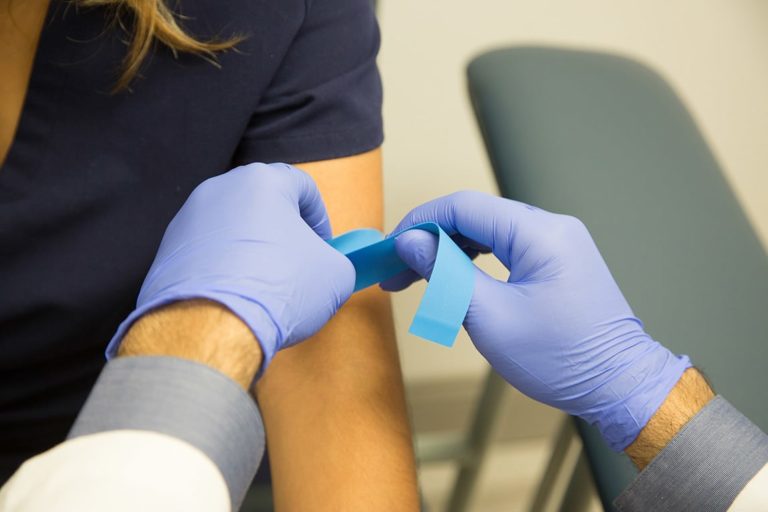Getting My Northeast Medical Institute - New Haven Campus Phlebotomy Course & Cna Class To Work
Getting My Northeast Medical Institute - New Haven Campus Phlebotomy Course & Cna Class To Work
Blog Article
The 5-Minute Rule for Northeast Medical Institute - New Haven Campus Phlebotomy Course & Cna Class
Table of ContentsOur Northeast Medical Institute - New Haven Campus Phlebotomy Course & Cna Class StatementsLittle Known Questions About Northeast Medical Institute - New Haven Campus Phlebotomy Course & Cna Class.Excitement About Northeast Medical Institute - New Haven Campus Phlebotomy Course & Cna ClassThe Greatest Guide To Northeast Medical Institute - New Haven Campus Phlebotomy Course & Cna ClassThe Definitive Guide to Northeast Medical Institute - New Haven Campus Phlebotomy Course & Cna ClassThe Definitive Guide for Northeast Medical Institute - New Haven Campus Phlebotomy Course & Cna Class
The usage of such devices must be accompanied by other infection avoidance and control methods, and training in their use.For setups with low sources, expense is a driving factor in purchase of safety-engineered gadgets - Phlebotomy Courses. Where safety-engineered gadgets are not offered, experienced usage of a needle and syringe serves. Unintended direct exposure and specific information about an occurrence ought to be recorded in a register. Support services need to be promoted for those who undertake unintentional direct exposure.
Among the vital markers of high quality of treatment in phlebotomy is the participation and participation of the person; this is equally beneficial to both the health employee and the person. Clear information either composed or spoken should be available to every person that goes through phlebotomy. Annex F offers example message for discussing the blood-sampling procedure to a client. labelling); transportation problems; interpretation of outcomes for scientific monitoring. In an outpatient department or clinic, offer a committed phlebotomy workstation containing: a tidy surface with two chairs (one for the phlebotomist and the other for the patient); a hand wash basin with soap, running water and paper towels; alcohol hand rub. In the blood-sampling space for an outpatient division or center, offer a comfortable reclining couch with an arm rest.
Some Of Northeast Medical Institute - New Haven Campus Phlebotomy Course & Cna Class
Make sure that the indicators for blood tasting are clearly defined, either in a created protocol or in documented directions (e.g. in a lab type). In any way times, adhere to the methods for infection avoidance and control provided in Table 2.2. Infection avoidance and control practices. Collect all the tools required for the treatment and area it within risk-free and very easy reach on a tray or cart, ensuring that all the things are clearly noticeable.
Where the individual is adult and aware, adhere to the steps described below. Introduce yourself to the patient, and ask the individual to state their full name. Check that the lab form matches the client's identity (i.e. match the patient's details with the research laboratory form, to make certain accurate recognition). Ask whether the license has allergic reactions, phobias or has ever before collapsed throughout previous injections or blood draws.
Make the person comfy in a supine placement (preferably). Area click for source a clean paper or towel under the patient's arm. Discuss the examination to be performed (see Annex F) and get spoken authorization. The person has a right to reject an examination at any moment before the blood tasting, so it is very important to guarantee that the individual has understood the procedure.
Rumored Buzz on Northeast Medical Institute - New Haven Campus Phlebotomy Course & Cna Class
Extend the client's arm and examine the antecubital fossa or lower arm. Situate a blood vessel of an excellent size that is noticeable, straight and clear.
DO NOT put the needle where capillaries are diverting, due to the fact that this raises the chance of a haematoma. Finding the capillary will certainly aid in determining the correct dimension of needle.
Samplings from central lines lug a risk of contamination or wrong research laboratory examination outcomes. It is acceptable, however not perfect, to draw blood samplings when initial presenting an in-dwelling venous gadget, prior to linking the cannula to the intravenous liquids.
The 8-Minute Rule for Northeast Medical Institute - New Haven Campus Phlebotomy Course & Cna Class
Failure to allow enough get in touch with time enhances the risk of contamination. DO NOT touch the cleaned up website; in particular, DO NOT put a finger over the capillary to guide the shaft of the exposed needle.
Ask the patient to form a hand so the blood vessels are extra noticeable. Get in the blood vessel quickly at a 30 level angle or much less, and proceed to present the needle along the capillary at the simplest angle of entry - CNA Training. Once enough blood has been accumulated, release the tourniquet prior to taking out the needle
The smart Trick of Northeast Medical Institute - New Haven Campus Phlebotomy Course & Cna Class That Nobody is Talking About
Take out the needle gently and apply mild stress to the site with a clean gauze or dry cotton-wool round. Ask the client to hold the gauze or cotton wool in place, with the arm extended and increased. Ask the patient NOT to bend the arm, due to the fact that doing so triggers a haematoma.

More About Northeast Medical Institute - New Haven Campus Phlebotomy Course & Cna Class
Do not press the syringe bettor because extra stress raises the risk of haemolysis. Where possible, keep televisions in a shelf and move the rack towards you. Infuse downwards right into the suitable coloured stopper. DO NOT eliminate the stopper since it will release the vacuum cleaner. If the example tube does not have a rubber stopper, inject incredibly slowly into the tube as reducing the pressure and velocity used to move the sampling reduces the risk of haemolysis.

Report this page